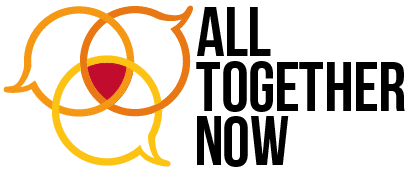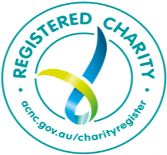The spectrum of white supremacy in Australia
White supremacy is the belief that white people are superior to people of other racial backgrounds and therefore whites should be politically, economically and socially dominant. Different forms of white supremacy have different ideas of who is considered ‘white’, and different white supremacist groups identify various racial and cultural groups as their primary enemies.
Different forms of white supremacy
White supremacy exists on a spectrum in Australia. Some Australians are nationalistic and have strong views about multiculturalism and keeping Australia “the way it is”. Others display a degree of antagonism towards culturally and linguistically diverse groups, have strong racist views and a strong sense of pride in white culture. Others actively want to protect the whiteness of Australia.
Research shows that around one in ten Australians have strongly racist views. This percentage is higher when it comes to attitudes towards specific groups. A Western Sydney University study found that 31% of Australians have anti-Muslim attitudes.
At the far end of the spectrum, white supremacists subscribe to extreme views about white superiority and the inferiority of all others who aren’t ‘white’. At its most extreme, white supremacist ideology actively rejects social, legal and government structures, and promotes changing society through the use of violence or other illegal means.
The following quote is from The Turner Diaries, a text that is widely read in extremist white supremacist circles:
“Ultimately we must separate ourselves from the Blacks and other non-whites and keep ourselves separate, no matter what it takes to accomplish this. We must do this not because we hate blacks, but because we cannot survive if we remain mixed with them. And we cannot survive if we permit the Jews and the traitors among us to repeat their treachery. Eventually we must hunt them down and get rid of them.” – William Pierce
White supremacy identity labels
Many individuals and groups have a preference as to which label they use to describe themselves. This is because the white supremacy movement is far from homogenous. Within the movement there are ideological differences around who is considered white, who the enemy is and what should be done to advance the cause of the white supremacist movement. Some of the labels used include:
- White Nationalism – is a type of nationalism that is formulated around white people and the white race. Its core objective is the establishment of a white nation, run by white people, maintaining a white majority. Its distinguishing feature from white supremacy is that it does not necessarily hold the white race to be superior.
- White Supremacy/white power – white supremacy can be seen as sub-category of white nationalism. White supremacists believe the white race is superior to all others, and thus white people should rule over others and dominate.
- Right-wing extremism – extremism in general can be conceptualised as a strong degree of rejection of society’s norms and values. It can also include the methods by which people seek to realise their aims, seriously impacting on the rights and liberties of others. Right wing extremism can be understood as an umbrella term that encompasses those who adhere to the range of far-right ideologies such as white supremacy or National Socialism.
- Neo-Nazi – neo-Nazism aims to revive the ideology of Nazism. The Nazi doctrine is based on Hitler’s National Socialist policies and includes ultra-nationalism, anti-Semitism, racism, ableism and homophobia. It is the original ideology of the German Nazi party and is a form of fascism.
- Alt-right (alternative-right) – is a broad internet-based movement comprising people with a range of far-right/conservative ideologies. It comes from a rejection of mainstream right wing politics. It has been said to include elements of white supremacy, nationalism, neo-Nazism, separatism, racial realism, nativism and Islamophobia. It is not a unified movement/position. It has been labelled as a modern rebranding of far-right extremist ideologies such as Nazism, which appeals more to the younger generation.
Essentially, these terms reflect the wide spectrum of far-right and white supremacist ideas, narratives and activities in Australia. Throughout the resources available on this website, we will use these terms interchangeably to reflect this spectrum.
How white supremacy groups operate
White supremacy groups are very careful to control what information individuals have access to. To a non-member visiting a white supremacy website, the groups appear to be little more than a social support group for people with beliefs about white supremacy. These groups present themselves as a welcoming place where a person can socialise and make friends, a place where they can find brothers and be part of a like-minded family that enjoys a good Aussie barbecue and a beer or two. The groups are very careful to appear law abiding and don’t publicise any extremist views. However, as an individual’s involvement with white supremacy increases, they are introduced to the more violent extremist ideology.
Membership in a white supremacy group requires members to adopt white supremacist ideology, conform with group norms and obey group rules. Members are expected to commit time and energy to the group and to be active participants. Individuals must constantly prove their loyalty and commitment to the group to achieve and retain their membership. Within the groups there is elitism, and many groups have levels of membership and pre-requisites that an individual must meet before being able to fully belong.
To achieve this conformity and obedience, white supremacy groups use specific manipulation techniques that aim to undermine an individual’s personal identity and dominate it with an identity that is steered by the group’s ideology. This new group or social identity occurs when the person identifies so strongly with the group’s beliefs, values and norms that the person operates with others based on group identity rather than on an interpersonal basis. The manipulation techniques include:
- Aggression – Members who doubt or criticise the group’s ideology, or do not conform to group norms are met with strong criticism, aggression and punishment. This punishment often includes physical violence or threats.
- Aversion – Loathing and hostility are directed towards external critics of the white supremacy movement, such as family members and the media, feeding the feelings of aversion towards anyone critical of white supremacy.
- Alienation – White supremacy groups usually distance themselves from general society, creating an “Us and them” scenario. Relationships with non-group members are strongly discouraged and the group becomes the individual’s ‘family’ and social support network.
- Absolute truth – Within the group, the leaders alone have the right to set the group’s ideology. Members must not question the leader’s views and there are no shades of grey.
Some key messages of the white supremacist movement
White supremacy messages exploit people’s fears and aim to foster an “Us and Them” attitude, where anyone who is not in agreement with the white supremacist messages is an enemy and part of the conspiracy to eradicate white culture. The rallying cry of white supremacy messages is that there is a war that needs to be fought to protect white culture and that those involved in the movement are members of an elite group. Examples of white supremacy catch phrases:
- Anti-racism is code for anti-white
- Multiculturalism is code for white genocide
- White people are God’s chosen people
- 14 words: “We must secure the existence of our people and a future for White Children”.


